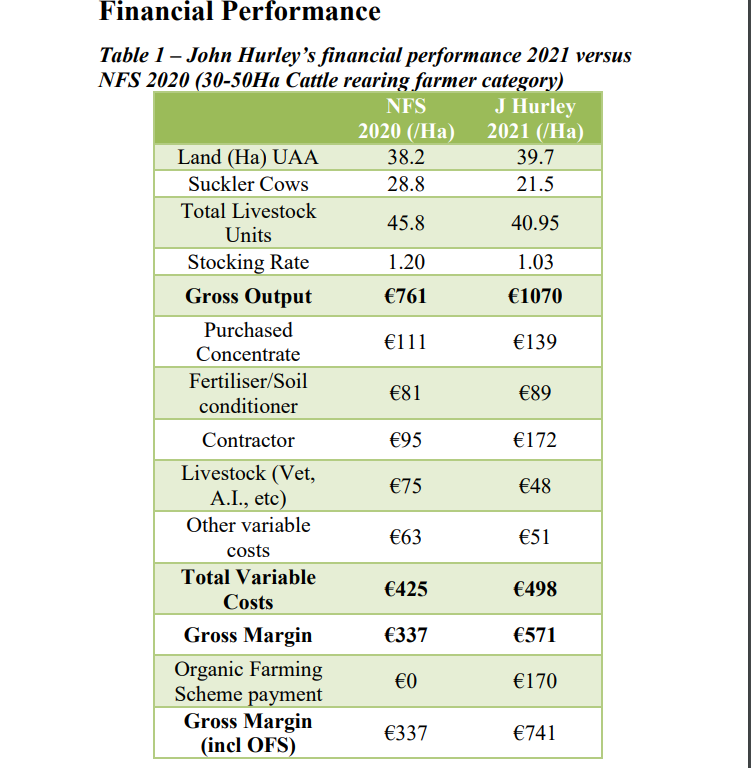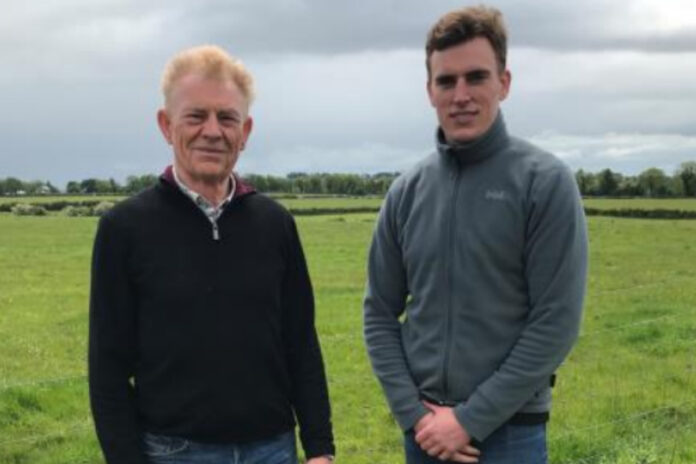Mixed Organic Farm in Roscommon
A combination of genetics, grassland management and an excellent health programme are “key” to a profitable beef and sheep enterprise.
That is what John Hurley of Castle Hill House, Ballintubber, Co Roscommon told attendees at a Teagasc organic farm walk earlier this month.
He explained that he previously farmed 58 suckler cows but felt the “production costs – feed and fertiliser – were too high” and stock numbers were “not sustainable”.
In 2015, he began converting to organics and achieved full organic status in 2017 for the farm, which is now home to 100 ewes and a 23-strong suckler cow herd.
He farms 39.6ha in total, across two blocks, with much of this being mainly free-draining land and 24.3ha accounting for a grazing platform.
The predominately January-February-calving herd, which contains some autumn calvers, comprises Limousin-cross and Belgian Blue-cross breeding females.
He breeds these to Charolais stock bull or AI Belgian Blue sires and sells subsequent autumn-born progeny as yearlings and spring-born calves in October.
The aim is to have one calf per cow per year, focus on high fertility and produce “quality” U+ weanlings from milk along with high genetic merit replacements.
According to ICBF, the herd’s calving interval sits at 368 days, with 0.97 calves/cow/year and an AGD of 2.06/kg/day.
John utilises €uro-star indices when selecting AI sires for the herd’s breeding programme and acquiring replacement bulls.
He focuses on growth rate traits, a low calving difficulty percentage and dual-purpose sires with five-star ratings for both maternal and terminal.
Sheep farming
On the sheep farming front, he farms seventy Rouge de l’Quest-cross-Charollais ewes alongside some Rouge de l’Quest-cross-Texels.
His ram team consists of two five-star pedigree Charollais to produce lambs for slaughter and one five-star pedigree Rouge to breed replacements from the flock’s “top-quality” dams.
When choosing replacements, he focuses on ease of lambing (lambing without assistance), maternal abilities, and milk quantities.
Overall, he is of the view that by paying particular attention to a ram’s genetic index and always opting for five stars with a high-reliability figure will lead to a higher scanning rate and better growth rates.
John told attendees about how a 2021-born crop of lambs performed. Last year, he commenced lambing on February 1st with 1.7 lambs/ewe and slaughtered the first group on April 25th. According to the Roscommon farmer, they averaged 40kgs live weight and killed out at 20.5kg.
He claims that his move to organics has not yielded any adverse effects on animal health. He operates a closed flock “as much as is possible” to help minimise disease risks and also takes faecal samples.
Grass, slurry and ration
Moreover, John spreads slurry in spring, spreads FYM in autumn, and utilises bio inoculants – including bio-stimulators pelleted fertiliser for land and bio-stimulant additives for slurry and FYM.
The farm has a rotational grazing system in place, with a view to finishing lambs early to allow more grazing for cattle.
Besides, John cuts 30-acres of land for silage (rotates silage fields) and makes 8-acres of hay, which produces 250 silage bales and 60 hay bales.
In 2021, he fed an organic ration to weanlings and fed ewes an organic nut for 60 days along with rams.
He told attendees that he does not feed any ration over the winter period.
Financial performance on mixed organic farm
He then discussed the farm’s financial performance in 2021 and compared this to Teagasc National Farm Survey figures for a 30-50ha cattle rearing enterprise.
Datas shows a gross output of €1,070/ha and €498/ha in variable costs, which excluding his Organic Farm Scheme Payment of €170/ha, equates to a gross margin of €571.
This is €234/ha higher (excluding OFS payment) than the data for the corresponding farm type in Teagasc’s survey data.

Other news articles on That’s Farming:





